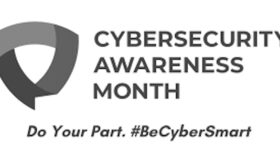Cryptocurrency – What’s It All About?
 What is cryptocurrency? Or you may call it Bitcoin. Where does it come from? How does it work? Is it real money? In case you haven’t heard we are in the midst of a monetary revolution. Many people are raving about Bitcoin. Some say it’s the money of the future. Others are saying it’s a scam or worse. So what’s it all about?
What is cryptocurrency? Or you may call it Bitcoin. Where does it come from? How does it work? Is it real money? In case you haven’t heard we are in the midst of a monetary revolution. Many people are raving about Bitcoin. Some say it’s the money of the future. Others are saying it’s a scam or worse. So what’s it all about?
First of all lets clear up the definition. Bitcoin is cryptocurrency but not all cryptocurrency is Bitcoin. As a matter of fact there are as many as 1,000 different brands of cryptocurrencies. Bitcoin is just the most valuable.
What is Cryptocurrency?
Cryptocurrency is a digital form of currency that is different from real money. Money or currency is produced by banks and nations who create the money’s value based economic strength. This money is managed through a central banking system of that nation.
How is cryptocurrency different?
Transactions of traditional money are controlled, taxed and tracked by banks and nations. Cryptocurrency transactions are made with no banks or governmental interference. Some economist and investors like to say that transactions are frictionless. Cryptocurrency users are anonymous . So essentially cryptocurrency is stateless money with no banks and the users are completely unknown. That is until they change Bitcoin into real cash.
Where did cryptocurrency come from?
Satoshi Nakamoto, the inventor, created Bitcoin in 2009. He has never been seen. No one even knows who or where he is. He may not even be a single person but a group of programmers. No one really knows. So cryptocurrency’s origin is a mystery. However, some believe that the National Security Agency has identified him. As usual the NSA has declined comment.
How is it created?
Cryptocurrency is created or “mined” using computers to solve incredibly complex math problems. Performing this work eats up a lot of electricity. So much electricity that you could never make a profit with the average computer. Cryptocurrency “miners,” as they are called, have begun building their own computers or hijacking other people’s computers to create Bitcoins. This has become known as Cryptojacking.
Mining a Bitcoin is not easy or cheap. Bitcoin’s value is about $6,000. How many Bitcoins would you have to produce to deal with a monthly $6,000 electricity bill and still make a profit?
After a computer solves a series of problems it becomes known as a block. The blocks is then verified by other users and, once confirmed, are added to what is called the blockchain. The blockchain grows rapidly with a new block being added about every 10 minutes. A blockchain is a record of the Bitcoins created. It also records Bitcoin transactions that can never be changed. The blockchain never ends and is not hosted in single location making it immune to hackers.
How do you store or spend Bitcoins?
Bitcoin transactions move between users like email. Each transaction is digitally signed using cryptography and goes to the entire Bitcoin network for verification. These transactions are open to the public and can be found on the blockchain. All Bitcoin transaction leads back to the point where the Bitcoins were first mined.
Bitcoins are kept in a bitcoin wallet or the digital equivalent of a bank account. You can download the Bitcoin wallet from the Google Play store or iTunes. Your wallet allows you to send, receive and store Bitcoins.
To complete a Bitcoin transaction you need two things; a public encryption key and a private encryption key.
Public keys or Bitcoin addresses, are random sequences of letters and numbers that work the same as an email address or username. Public keys are safe to share. You must give your Bitcoin address to receive Bitcoin. The private key must keep secret. This private key allows you to spend the Bitcoin.
Is Bitcoin real money?
Well, that is where Bitcoin may run into problems. First of all Bitcoin must meet the current standard of what money is. There are four basic standards for money.
Scarcity – There can be a only a limited amount available to secure its value. There can only be 21 million Bitcoins in the world. Right now there are about 9 million Bitcoins. Once it reaches 21 million no more Bitcoins can be mined.
Durability – It must stand up to constant handling with no maintenance or special treatment. Bitcoin is completely digital and is never actually touched but human hands. However, Bitcoin is vulnerable. User error can cause the loss or destruction of Bitcoins. Users have lost or forgotten their private key making access to the currency impossible. Recently a a single user error caused the destruction of over $300 million worth of Bitcoin. So durability is an issue as well as security.
Fungibility – Is every Bitcoin worth the same. Let me make this simple for you. According to CoinMarketCap.com there are 1,037 different cryptocurrencies available. So not every one is worth the $6,000 I spoke about earlier.
Portability – Cryptocurrency can be carried anywhere you carry your smartphone just like cash. So it is portable.
Breaking It Down.
Cryptocurrency is growing in acceptance but is not yet considered a viable currency. Its value is unstable and it is considered an unacceptable risk by most financial experts and the coin of the future by others. In addition, governments are now examining the cryptocurrency phenomenon. Its anonymity makes it useful for crimes such as drug dealing, terrorism, money laundering and tax dodging. So the future right now depends on the view world governments take. A single law or crime could bring the whole thing to a halt or change the very definition of cryptocurrency.






